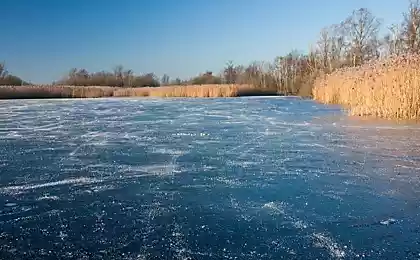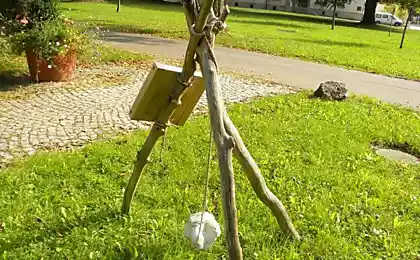754
Curling - ice and rock
Curling competition at the Olympic Games 2010 held in the premises of the local Vancouver Curling Club, founded in 1912 Club Sports Complex is located right in the heart of the one-story apartment buildings - the terms of green areas on the slopes of the hills, singing birds, peace and quiet.
Yesterday were female semifinals - Canadians played with colleagues from Switzerland and Swedish blondes - Chinese brunettes. Canadian and Swedish women won. At first, not very interesting, but then, when drawn into the intrigue of a long fight, and start to monitor the account and the course of the match - delaying death and did not want to leave. Very elegant, intelligent, akin billiards or croquet, sport. With a large internal stress and apparent ease of movement ...
11 ph © drugoi
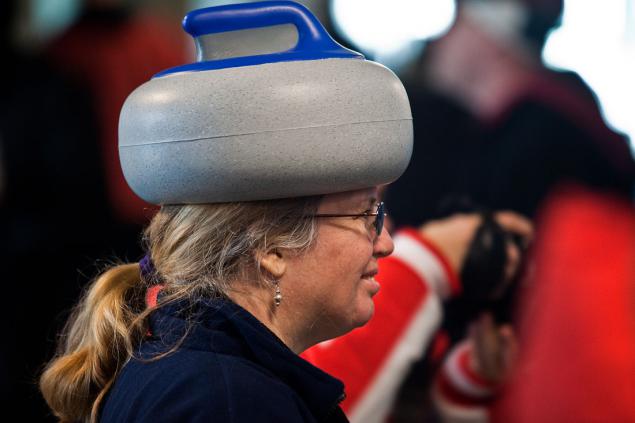
It is known that the curling originated in Scotland in the early XVI century, the actual confirmation of the existence of this sports game is kёrlingovy sports equipment (stone), the surface of which is stamped date of manufacture - 1511, found at the bottom of the dried lake Danbai. The first historical mention of curling occur in the medieval monastery books dating from 1541 year, preserved in the Abbey of Paisley, Scotland.
About the same time (1565) are two paintings by Pieter Bruegel, which depicted the Dutch peasants playing curling - a game that is close to curling, ice frozen lake. It is interesting that Scotland and the Netherlands in the XVI century had a very strong trade and cultural ties, as evidenced by the wide distribution in continental Europe not only curling, but also courses.

The oldest curling club in the world is the players association CIC city located in the north of Scotland, founded in 1716. In the same city is the oldest man-made created a sports field for playing curling - artificial dam enclosing the pond and sets a platform measuring 100 by 250 meters.
The word curling first began to be used as the name of the game in the XVII century, after mentioning in his poem Scottish poet Henry Adamson. Researchers believe that the game got its name not from the complex curls-tracks that left a stone on the ice, and the Scottish verb curr, which describes a low growl or roar (in English, the closest equivalent is the purr). The thing is that the granite stone, sliding on the ice, ice zazubrinok concerned, why there is a characteristic sound. And to this day in some parts of Scotland, the game is more known as "the roaring game of stones."

It is worth noting that the imperfect form of shells and unpreparedness of the field did not allow ancient kёrleram play based on one or another winning strategy, or turn out sportsmanship - in most cases, the outcome of the game decided success of a team or a player.
Interesting information about shells is also found in the annals of the Scottish city of Darvell weavers rest after work, playing curling stone with heavy loads, used in oppression under the looms, and these loads have a removable handle. There is also written that "many wives supported the authority of her husband, polishing stone pen and bringing its shape to perfection."
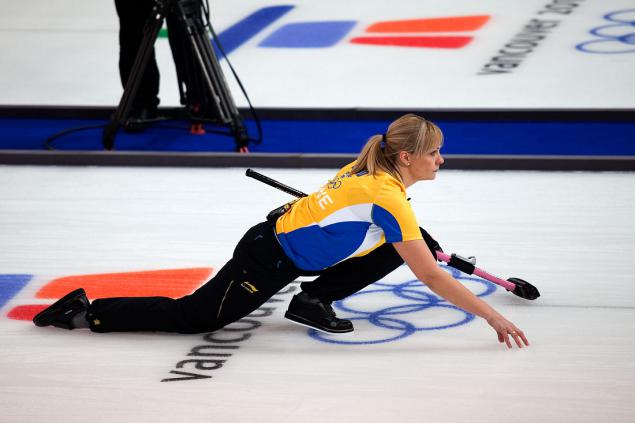
Automatic camera that hang over the "home" - two circles, where players start up the stones.

The first club Curler open in 1737 in the province of Fife.
Around the XVIII century stone shape beginning to standardize and acquired its modern form: diameter 11, 5 inches (about 29 cm), height 4, 5 inches (11, 4 cm), weight 44 pounds (19 to 96 kg). Cold climate, an abundance of ice and democratic requirements for the game made it very popular in Scotland, and then throughout the world. Together with migrants who had fled to America from the power of English monarchs curling penetrated to the New World, in Canada, where he received a particularly widespread due to objective reasons of climate. Curling debut in the United States took place in 1768: the game brought a Scottish soldiers stationed at the time in Quebec.

In the first half of the XIX century have been approved rules of the game of curling, which since then have not changed.
First world championship curling among men was held in Falkirk and Edinburgh in 1959 and went down in history as "The competition for the Scottish Cup", and won his Canadian team led by Ernie Richards. The first Women's World Cup was held in Perth, Scotland in 1979.

In 2005, world gold has fought 12 teams, of which 8 teams representing Europe, 2 - North America, and 2 - Asia and Oceania. Vouchers for the world championship, European teams are the results of the European Championships, which take place in 1975. At the European Championships in 2005 was a record - 58 teams from 38 countries.
At the Games in 1924 were held demonstration competitions in curling.
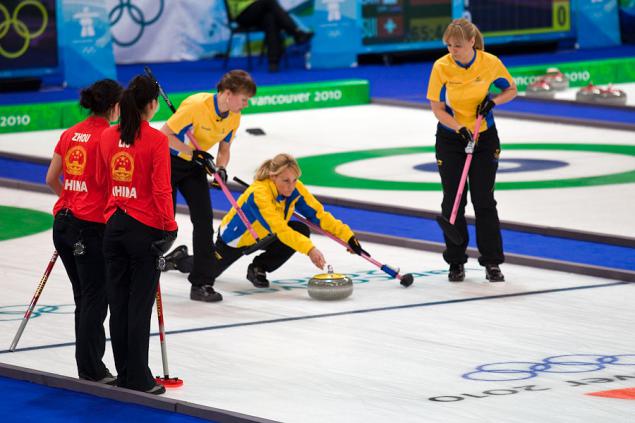
Skip the most graceful movements and beautiful woman - Canadian Cheryl Bernard. Nobody travel along the ice, like a lizard like it. Canadians - the most likely candidates for the Olympic gold medal in the sport.

Swedish quartet of girls worked very smoothly, leaving no chance of Chinese women in the first half.

In 1998, curling was recognized as an Olympic sport, and at the Winter Olympics in Nagano were drawn first gold medal. The winner in the men's competition was the team of Switzerland and the first gold medal in women's team won Canada.

Source:
Yesterday were female semifinals - Canadians played with colleagues from Switzerland and Swedish blondes - Chinese brunettes. Canadian and Swedish women won. At first, not very interesting, but then, when drawn into the intrigue of a long fight, and start to monitor the account and the course of the match - delaying death and did not want to leave. Very elegant, intelligent, akin billiards or croquet, sport. With a large internal stress and apparent ease of movement ...
11 ph © drugoi

It is known that the curling originated in Scotland in the early XVI century, the actual confirmation of the existence of this sports game is kёrlingovy sports equipment (stone), the surface of which is stamped date of manufacture - 1511, found at the bottom of the dried lake Danbai. The first historical mention of curling occur in the medieval monastery books dating from 1541 year, preserved in the Abbey of Paisley, Scotland.
About the same time (1565) are two paintings by Pieter Bruegel, which depicted the Dutch peasants playing curling - a game that is close to curling, ice frozen lake. It is interesting that Scotland and the Netherlands in the XVI century had a very strong trade and cultural ties, as evidenced by the wide distribution in continental Europe not only curling, but also courses.

The oldest curling club in the world is the players association CIC city located in the north of Scotland, founded in 1716. In the same city is the oldest man-made created a sports field for playing curling - artificial dam enclosing the pond and sets a platform measuring 100 by 250 meters.
The word curling first began to be used as the name of the game in the XVII century, after mentioning in his poem Scottish poet Henry Adamson. Researchers believe that the game got its name not from the complex curls-tracks that left a stone on the ice, and the Scottish verb curr, which describes a low growl or roar (in English, the closest equivalent is the purr). The thing is that the granite stone, sliding on the ice, ice zazubrinok concerned, why there is a characteristic sound. And to this day in some parts of Scotland, the game is more known as "the roaring game of stones."

It is worth noting that the imperfect form of shells and unpreparedness of the field did not allow ancient kёrleram play based on one or another winning strategy, or turn out sportsmanship - in most cases, the outcome of the game decided success of a team or a player.
Interesting information about shells is also found in the annals of the Scottish city of Darvell weavers rest after work, playing curling stone with heavy loads, used in oppression under the looms, and these loads have a removable handle. There is also written that "many wives supported the authority of her husband, polishing stone pen and bringing its shape to perfection."

Automatic camera that hang over the "home" - two circles, where players start up the stones.

The first club Curler open in 1737 in the province of Fife.
Around the XVIII century stone shape beginning to standardize and acquired its modern form: diameter 11, 5 inches (about 29 cm), height 4, 5 inches (11, 4 cm), weight 44 pounds (19 to 96 kg). Cold climate, an abundance of ice and democratic requirements for the game made it very popular in Scotland, and then throughout the world. Together with migrants who had fled to America from the power of English monarchs curling penetrated to the New World, in Canada, where he received a particularly widespread due to objective reasons of climate. Curling debut in the United States took place in 1768: the game brought a Scottish soldiers stationed at the time in Quebec.

In the first half of the XIX century have been approved rules of the game of curling, which since then have not changed.
First world championship curling among men was held in Falkirk and Edinburgh in 1959 and went down in history as "The competition for the Scottish Cup", and won his Canadian team led by Ernie Richards. The first Women's World Cup was held in Perth, Scotland in 1979.

In 2005, world gold has fought 12 teams, of which 8 teams representing Europe, 2 - North America, and 2 - Asia and Oceania. Vouchers for the world championship, European teams are the results of the European Championships, which take place in 1975. At the European Championships in 2005 was a record - 58 teams from 38 countries.
At the Games in 1924 were held demonstration competitions in curling.

Skip the most graceful movements and beautiful woman - Canadian Cheryl Bernard. Nobody travel along the ice, like a lizard like it. Canadians - the most likely candidates for the Olympic gold medal in the sport.

Swedish quartet of girls worked very smoothly, leaving no chance of Chinese women in the first half.

In 1998, curling was recognized as an Olympic sport, and at the Winter Olympics in Nagano were drawn first gold medal. The winner in the men's competition was the team of Switzerland and the first gold medal in women's team won Canada.

Source:

